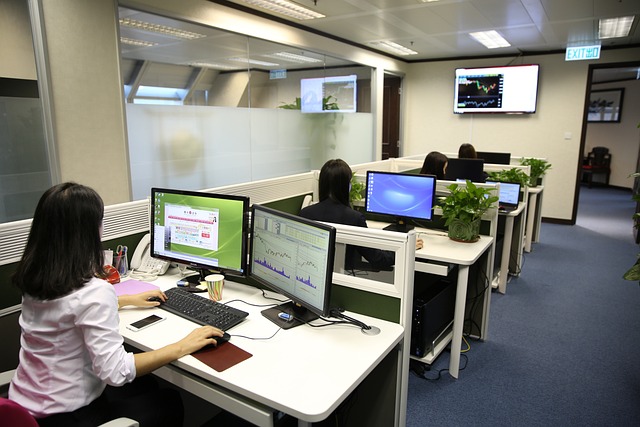What Does Commercial Property Insurance Cover in Canada?

Running a business comes with its share of risks, and protecting your physical assets is crucial to ensuring long-term success. Commercial property insurance is one of the most important types of coverage for businesses in Canada, as it safeguards your property, equipment, inventory, and other valuable assets from unexpected events. In this article, we’ll explore what commercial property insurance covers, why it’s essential, and how it can protect your business.
What Is Commercial Property Insurance?
Commercial property insurance is a type of business insurance designed to protect the physical assets of your company. It provides financial compensation for damages or losses caused by covered perils, such as fire, theft, vandalism, or natural disasters. This type of insurance is vital for businesses that own or lease buildings, store inventory, or rely on specialized equipment to operate.
In Canada, commercial property insurance is often bundled with other coverages, such as liability insurance, under a Business Owner’s Policy (BOP) . However, standalone policies are also available for businesses with unique needs.
What Does Commercial Property Insurance Cover?
The specific coverage provided by a commercial property insurance policy depends on the terms of the policy and the insurer. However, most policies typically include the following key components:
1. Building Coverage
If your business owns the building where it operates, commercial property insurance can cover:
- Structural damage to the building caused by fire, windstorms, hail, or other covered perils.
- Repairs or rebuilding costs after a covered loss.
- Permanent fixtures, such as plumbing, electrical systems, and HVAC units.
For leased spaces, building coverage may not apply unless you’re responsible for maintaining or improving the premises under your lease agreement.
2. Contents Coverage
This portion of the policy protects the items inside your business property, including:
- Furniture, fixtures, and office equipment.
- Inventory and raw materials.
- Tools, machinery, and specialized equipment.
- Electronics, such as computers and point-of-sale systems.
Contents coverage applies whether the property is located at your primary business location, a secondary site, or even temporarily off-site (e.g., during transportation).
3. Business Interruption Insurance
While not always included automatically, many commercial property policies offer business interruption insurance as an add-on. This coverage helps compensate for lost income if your business operations are disrupted due to a covered peril. For example:
- If a fire forces you to close your store for repairs, business interruption insurance can cover ongoing expenses like rent, utilities, and payroll until you’re back up and running.
4. Additional Structures
If your business has additional structures on the property—such as garages, warehouses, fences, or signage—these may be covered under your policy. Be sure to confirm whether these structures are included or require separate coverage.
5. Loss of Income Due to Off-Premises Events
Some policies extend coverage to situations where your business suffers losses due to damage to property stored off-site. For instance:
- If your inventory is destroyed in a warehouse fire, your policy may reimburse you for the lost goods.
6. Extra Expenses
In addition to repairing or replacing damaged property, commercial property insurance can cover extra expenses incurred to keep your business operational during recovery. Examples include:
- Renting temporary office space.
- Leasing replacement equipment.
- Hiring contractors to expedite repairs.
Common Perils Covered by Commercial Property Insurance
Most commercial property insurance policies cover a range of perils, including:
- Fire and Smoke Damage : One of the most common causes of property loss.
- Theft and Vandalism : Protects against stolen or damaged property.
- Windstorms and Hail : Covers damage caused by severe weather conditions.
- Water Damage : Includes burst pipes, accidental leaks, or sprinkler malfunctions (but excludes flooding).
- Explosions : Damages caused by gas explosions or similar incidents.
- Falling Objects : Such as trees or debris damaging your building.
What Isn’t Covered by Commercial Property Insurance?
While commercial property insurance offers broad protection, there are some exclusions to be aware of. Common exclusions include:
- Floods : Standard policies do not cover flood damage. You’ll need separate flood insurance for this risk.
- Earthquakes : Like floods, earthquake coverage requires an additional endorsement or standalone policy.
- Wear and Tear : Normal deterioration of property or equipment is not covered.
- Intentional Acts : Damage caused deliberately by the policyholder is excluded.
- Utility Failures : Power outages or mechanical breakdowns are generally not covered unless you purchase specific endorsements.
- Pandemics : Many insurers exclude losses related to pandemics or infectious diseases.
Always review your policy carefully to understand its limitations and consider adding endorsements for additional protection.
Optional Add-Ons and Endorsements
To tailor your commercial property insurance to your business’s unique needs, you can add optional endorsements. Some popular options include:
- Equipment Breakdown Coverage : Protects against mechanical or electrical failures of critical equipment.
- Sewer Backup Coverage : Covers water damage caused by backed-up sewers or drains.
- Cyber Liability Coverage : While not directly related to physical property, this add-on can protect against cyberattacks that disrupt your business operations.
- Inflation Guard : Automatically adjusts your coverage limits to account for rising repair and replacement costs.
Why Is Commercial Property Insurance Important?
Commercial property insurance is essential for several reasons:
- Asset Protection : Your business property and equipment represent significant investments. Without insurance, replacing or repairing them could be financially devastating.
- Liability Mitigation : If your property is damaged and you can’t fulfill client obligations, you may face lawsuits or penalties. Insurance helps mitigate these risks.
- Peace of Mind : Knowing your assets are protected allows you to focus on growing your business rather than worrying about potential disasters.
- Lease Requirements : Many landlords require tenants to carry commercial property insurance as part of their lease agreements.
How Much Does Commercial Property Insurance Cost?
The cost of commercial property insurance varies based on several factors, including:
- Location : Properties in high-risk areas (e.g., prone to flooding or earthquakes) will have higher premiums.
- Building Value : The size, age, and construction materials of your building impact coverage costs.
- Inventory and Equipment : The value of your contents affects the premium.
- Deductible Amount : Higher deductibles lower your premium but increase out-of-pocket costs during a claim.
- Coverage Limits : More extensive coverage results in higher premiums.
- Industry Type : High-risk industries, such as manufacturing or hospitality, may pay more for insurance.
On average, small businesses in Canada can expect to pay between $500 and $2,000 annually for commercial property insurance. Larger businesses or those with specialized needs may pay significantly more.
Tips for Getting the Best Coverage
- Conduct a Risk Assessment
- Evaluate potential risks to your business property and prioritize coverage accordingly.
- Create an Inventory
- Document all your business assets, including photos and receipts, to ensure accurate valuation.
- Bundle Policies
- Combine commercial property insurance with liability and other coverages in a Business Owner’s Policy (BOP) to save money.
- Shop Around
- Compare quotes from multiple insurers to find the best rates and coverage options.
- Review Annually
- Update your policy regularly to reflect changes in your business, such as new equipment or increased inventory.




